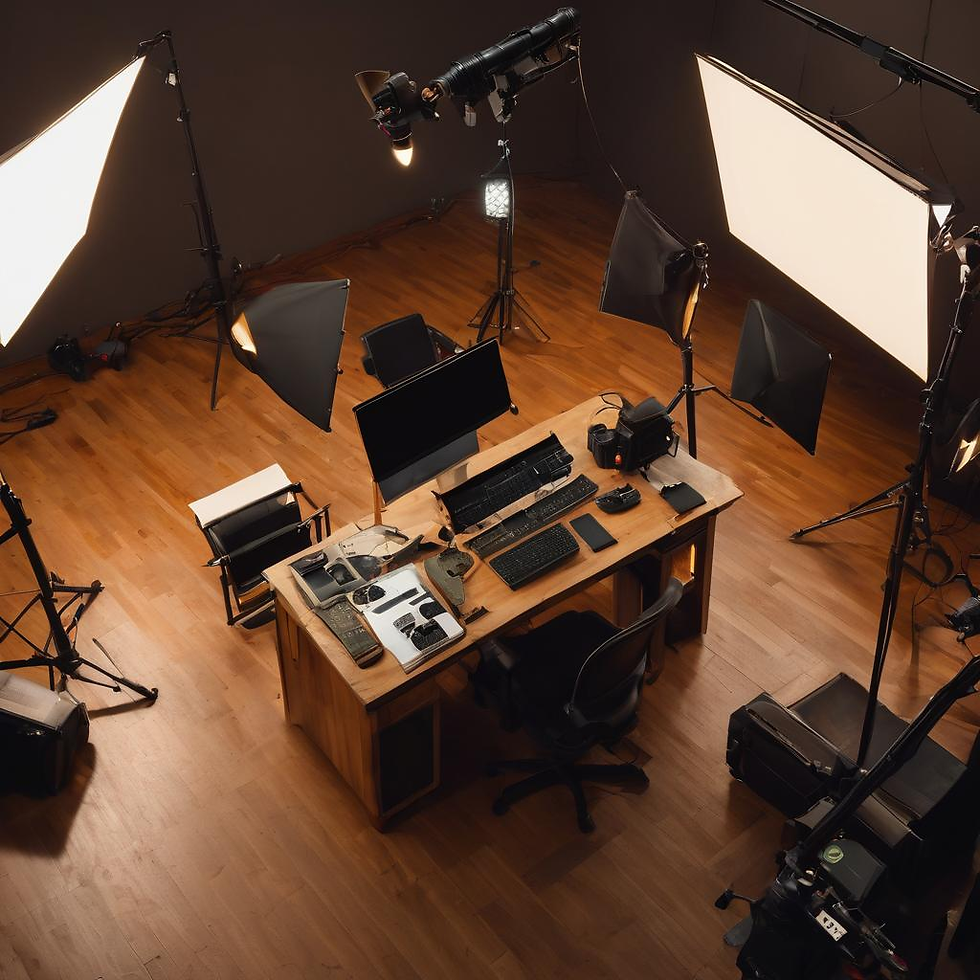Mastering the Art of Studio Lighting: A Comprehensive Guide
- maacdharamshala
- Jan 16, 2024
- 2 min read
Studio lighting is a crucial aspect of photography and videography, influencing the mood, tone, and overall quality of the final output. Whether you're a seasoned professional or an amateur enthusiast, understanding and mastering studio light setup can significantly enhance your creative endeavors. In this blog, we'll explore the key elements of an effective studio light setup, providing insights and tips for achieving stunning results.
1. Know Your Equipment:
Before delving into the intricacies of studio lighting, familiarize yourself with the essential equipment. This typically includes lights (main light, fill light, and accent lights), light modifiers (softboxes, umbrellas, and reflectors), and a reliable backdrop. Understanding each component's function is essential for creating a well-balanced and visually appealing composition.
2. Mastering the Three-Point Lighting Technique:
The three-point lighting technique is a fundamental concept in studio lighting. It involves positioning three lights strategically to illuminate the subject effectively. The key light is the primary source, the fill light softens shadows, and the accent light adds depth by highlighting specific areas. Experimenting with different angles and intensities will help you achieve the desired look for your shoot.
3. Consider the Quality of Light:
The quality of light plays a crucial role in determining the mood of your images. Soft light, achieved through diffusers or bounce surfaces, creates gentle shadows and is ideal for portraits. On the other hand, harsh light can be used for dramatic effects or to emphasize textures. Understanding when to use each type of light quality is essential for achieving the desired visual impact.
4. Experiment with Light Modifiers:
Light modifiers, such as softboxes and umbrellas, allow you to shape and control the direction of light. Softboxes produce a diffused, even light, while umbrellas provide a broader, softer illumination. Experimenting with different modifiers can help you achieve the specific look you envision for your project.
5. Mind the Background:
A well-chosen backdrop can enhance the overall composition of your shots. Consider the color, texture, and style of the background, ensuring it complements rather than distracts from the subject. Experiment with different materials and colors to achieve the desired visual impact.
6. Understand Color Temperature:
Studio lights come in various color temperatures, measured in Kelvins (K). Understanding color temperature is crucial for maintaining color accuracy in your images. Match the color temperature of your lights to the ambient lighting conditions or adjust as needed to avoid unwanted color casts.
7. Create Depth with Shadows:
Shadows are not the enemy; they add depth and dimension to your images. Experiment with shadow placement and intensity to create visually compelling compositions. Understanding how to control shadows allows you to sculpt the subject and emphasize specific features.
Mastering the art of studio lighting is a continuous learning process that requires experimentation and creativity. By understanding the equipment, experimenting with different techniques, and paying attention to the details, you can elevate your photography or videography to new heights. Remember that each project is unique, so don't hesitate to explore and push the boundaries of your studio light setup to achieve the desired visual impact.









Comments